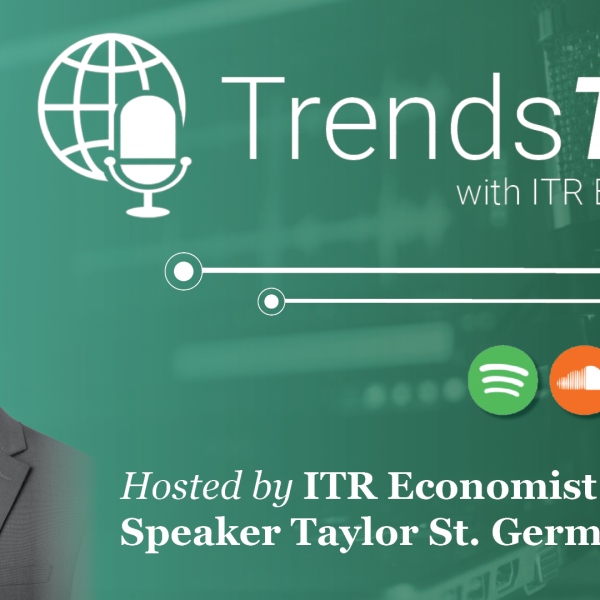- Mon - Fri: 8:30 - 5:00
- +1-603-796-2500
- ITR@itreconomics.com
March 17, 2023
- Home
- portfolio
- TrendsTalk
- March 17, 2023
with lauren saidel-baker
FORECASTING SEASONAL DATA
Even if your business is seasonal, ITR Economics’ methodology can still be applied to your company! See how we can forecast your seasonal data in the latest episode of TrendsTalk with ITR Economist and Speaker Lauren Saidel-Baker.
The below transcript is a literal translation of the podcast audio that has been machine generated by Rev.
Hi, I’m Lauren Saidel-Baker, and welcome to this episode of ITR Economics TrendsTalk.
I’m recording today from the middle of a Nor’easter. We are up here in New England getting a ton of snow today. So it brought to mind a question that I get quite frequently for some of our clients, which is, if my data set is seasonal, can ITR economics still forecast it? The good news is yes. Our methodology still works for all kinds of different businesses, especially those that are seasonal. If you’ve gone through our methodology, and I would encourage you to go to our website and look at the formulas and the methodology behind this analysis, you’ll notice that we calculate several different metrics, from a three and 12-month moving average, to the 3-12 rate of change, and the 12-12 are annual rate of change.
Now, of those four key metrics that we refer to throughout our analysis and throughout most reports, the only one that directly reflects seasonality would be that three month moving average, or for 3MMA, as we like to abbreviate it. And that’s because we’re only taking three months of data. So if that three months falls in your busy season, yes, the data will be a little bit inflated. If it’s in the slow season, then it’ll come in a little bit lower.
But the other three key metrics, and critically those rates of change, they all adjust for seasonality. Now, the annual numbers are easy. Any annual figure has one of each month in it. Or if we’re talking about a 12- 12 rate of change, we’re looking back at the year [inaudible 00:01:33]. But the 3-12, that’s where some people get tripped up. Because our three over 12 rate of change, our quarterly growth rate, is never a sequential quarterly growth rate. We’re never looking at say, 1Q compared to 2Q. That would cause natural seasonality to skew the results a little bit. Maybe 2Qs just always busier than 1Q for my business, so I should expect natural rise. And then we would have to analyze about how much rise is normal or abnormal.
But because we’re taking a three over 12, the same three months of the year compared to the three months one year ago, we’re always comparing the same quarter. So what that means is that if I have a seasonal data set, I’m either comparing my current busy season to my last busy season or my current slow season to my last slow season. It takes out that natural seasonality of business. So even if I am sitting here in New Hampshire in the middle of a snowstorm, well, we probably got a snowstorm last March as well. Obviously, weather events and different patterns can adjust the analysis here, and it is something that we take into account. But overall seasonality, those normal seasonal patterns, that isn’t going to noticeably skew our analysis and how we look at the data.
I would encourage you to be careful because different data sources do release different seasonally or not seasonally adjusted data. So you’ll get some numbers that might look a little funny to you at first, especially when you compare them to our ITR numbers. That’s why we stand by our analysis. That’s why we’ve been using it for so many years.
Thank you so much for joining me today. My name is Lauren Saidel-Baker. Let’s talk again soon.





